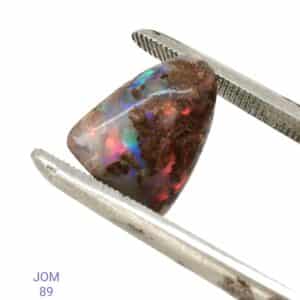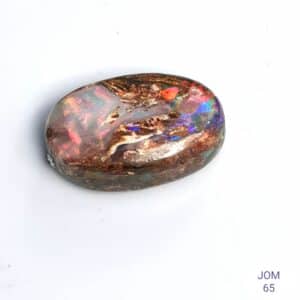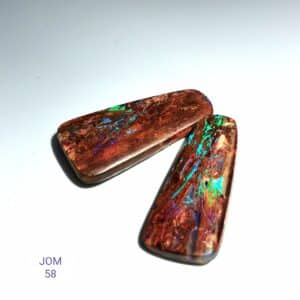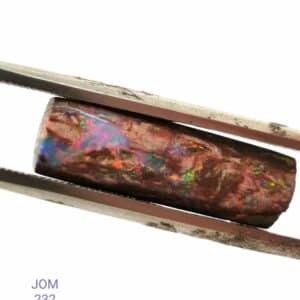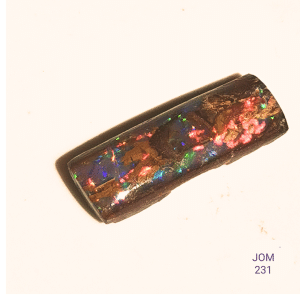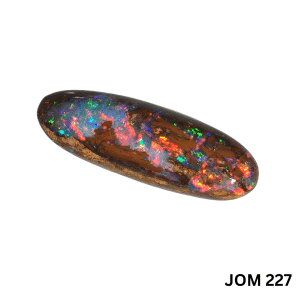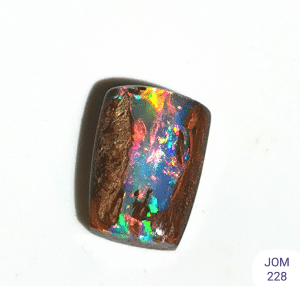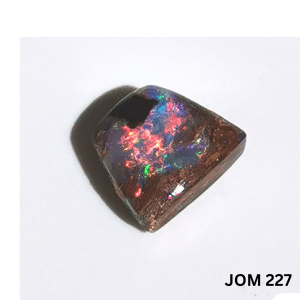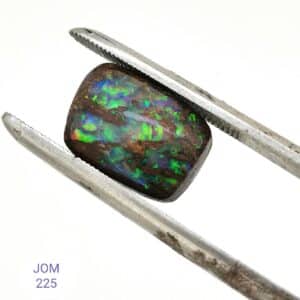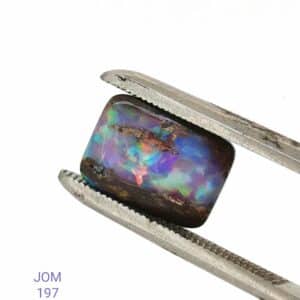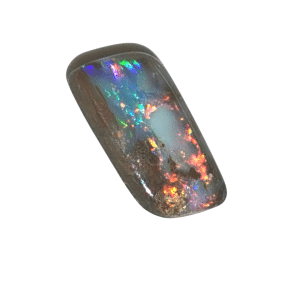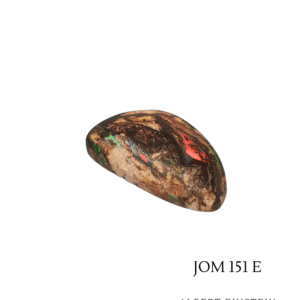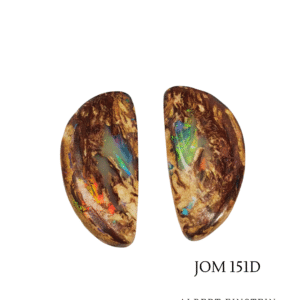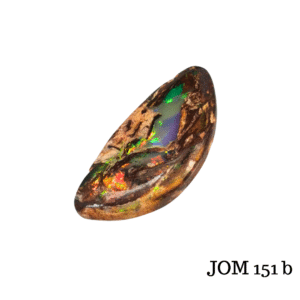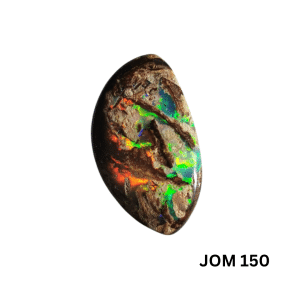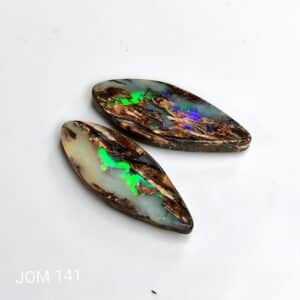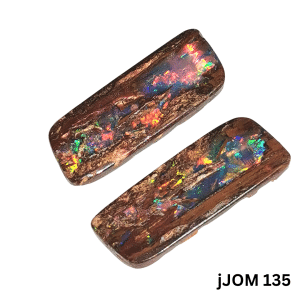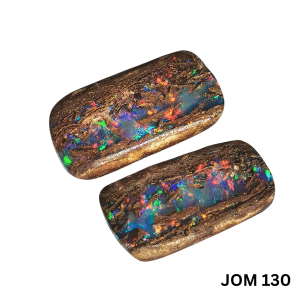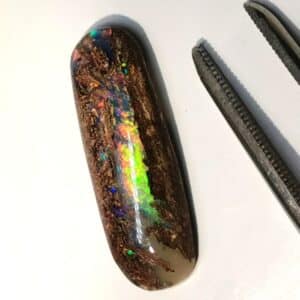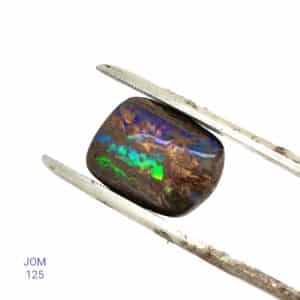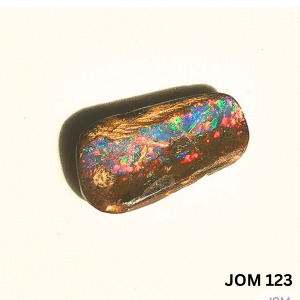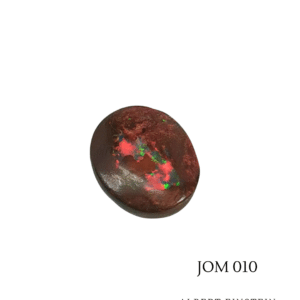 Jundah is located 1,122 kms west of Brisbane in Queensland.
Jundah is located 1,122 kms west of Brisbane in Queensland.
The small outback town of Jundah was established in 1883 on the east bank of the Thomson River and the town name meaning “woman” in the local Aboriginal language (Kuungkari).
The Jundah opal field has produced the rare pipe opal historically where silica is deposited in the organic remains of fossil vegetable material (petrified wood) or worm tubes in a grey claystone underlying a red sandstone unit. Molecules of water have percolated through the red sandstone over many millennia until the impermeable claystone layer is reached and the water deposited in any convenient cavity available…..a purely fortuitous outcome. This has resulted in bright red/green/blue neon colours usually as fiery flashes – the more red, the rarer the gemstone.
Precious wood opal occurrences are quite rare in the opal-bearing districts of western Queensland.
 The red sandstone overburden is removed in a stripping operation then slow selective mining excavates the top of the claystone (about 50cm) which is then
The red sandstone overburden is removed in a stripping operation then slow selective mining excavates the top of the claystone (about 50cm) which is then
broken up and sorted by hand to recover pipes and concretions that might contain precious opal, as in the photo below.
 Back in the camp each piece is cut with a diamond saw to disclose, hopefully, the fantastic colours that will eventually be processed into a polished gemstone.
Back in the camp each piece is cut with a diamond saw to disclose, hopefully, the fantastic colours that will eventually be processed into a polished gemstone.

